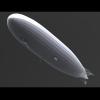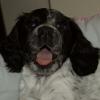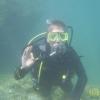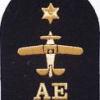-
Posts
600 -
Joined
-
Last visited
About ICMF
Profile Information
-
Gender
Not Telling
-
Location
Canada
ICMF's Achievements

Obsessed Member (4/9)
587
Reputation
-
Good news! Those same markings are available from Caracal as an aftermarket decal sheet, so there's still no need for you to buy the Magic Factory kit. You can just buy the decals and use them on your Hasegawa kit. https://www.scalemates.com/kits/caracal-models-cd48177-a-4m-skyhawk--1275029 There are a couple of sets available on eBay right now, too.
- 68 replies
-
- 3
-

-

-
That's actually really awesome. Kudos to Airfix!
-
There is a lot of misinformation about 3D printing in general and resin 3D printing in particular. To bust some of the myths out there... ALL resins produce harmful gasses. Whether you can smell it or not. Whether it's 'normal' or ABS, plant-based or water-based. Some may seem more noticeable and some may seem less noticeable, but every resin you can buy will do it. 'Normal' and 'ABS' resins use an acrylic (plastic - as in Perspex) epoxy. "Plant-based" resins use a PLA (plastic) epoxy; this is a plastic that is derived from corn or soybean rather than petroleum, but all the other chemicals that make it work are the same as 'normal' resin. Normal, ABS and plant-based resins are all (typically) alcohol-soluble; that is, you need to use alcohol to clean any excess resin off the prints. (this is another source of 'smell', FWIW - large quantities of ethanol/methanol/isopropanol do smell) 'Water-based' resins typically use acrylic epoxies, IIRC, but the formula for all the other chemicals has been tweaked slightly so that the resins are water soluble; that is, you can use water to clean any excess resin off the prints. ALL UNCURED RESIN IS CONSIDERED TOXIC WASTE. Whether it's in the bottle, on a paper towel, or in your cleaning solution. NEVER POUR CONTAMINATED CLEANING SOLUTION DOWN THE DRAIN. It doesn't matter if it's alcohol or water. It's toxic waste and needs to be disposed of accordingly. Uncured resin will only cure if exposed to the correct wavelength of UV light, so any uncured resin you pour out will simply contaminate your water supply and leech into the environment. So, functionally, there is little difference between different types of resin. Plant based resins trade some petrochemical-sourced plastics for plant-sourced plastics and this does slightly reduce the overall exposure risk (and anecdotally, often the smell, slightly), but post-processing still involves exposure to alcohol vapour. Water-based resins restore the petrochemical-sourced plastics so have most of the exposure risk of 'normal' resin, but does eliminate the exposure to alcohol vapour in post-processing. Although I'd argue that water-washable resins are actually more dangerous than others, because the term 'water washable' often leads people to ignore the actual risks and mishandle the resin and associated waste. Resin is a sensitizing toxin. People don't usually pass out and die after their first whiff of the stuff. But the more you are exposed to it, the more likely it is that it will cause health problems, and the more serious those health problems will be. And I think this is the source for most of the confusion about its safety - some people read about the potential dangers, yell and shout about how awful they are and make people scared to use the stuff; others hear about the dangers, and when they don't have any immediate issues when they use it, they decide it is all made up. (also: lots of young users who think they're invincible) The truth is, no single exposure is likely to be a problem, but it does pose a real risk long-term, and it is wise to handle the materials responsibly and with respect to protect your health. 'Smell' will depend to a certain extent on the specific resins you use (brand, product line and even colour) and on your own nose and sensitivities. Also, the amount of smell will depend on the size of your printer - a small vat holding a small amount of resin will produce less smell than a large vat holding a couple of litres of resin. Generally speaking, you'll notice the smell less over time, but that's not necessarily a good thing. 😉 Personally, I find that the "amount" of smell is roughly similar to airbrushing. You're not going to open a bottle in a closed room in the basement and everyone will suddenly need to evacuate the house, but anyone who walks into the room with the printer will almost certainly notice the smell. The comment about using the same precautions as with solvent based paints is fitting - if that room has sufficient ventilation that you'd be comfortable painting in it for an hour or two, and the fumes would dissipate in a reasonable amount of time, it would probably work for resin printing. The smell will definitely be noticeable any time - and for as long as - the printer is running. If it's going to take 24 hours to run a print, then the printer will be producing fumes continuously for 24 hours. Resin printers contain various fans, and these will pull the odour out of the printer and vent it into your environment. (some printers contain filters that are supposed to help with the smell, but these are mostly cosmetic and don't actually do much) And the odour will linger for some time after you have finished printing (think: hours). This is probably the biggest drawback in terms of smell - it's not that it smells really, really bad, it's that it smells not-great, but for a fairly long time. Your best bet, if at all possible, would, be to either contain the smell inside an enclosure, and/or vent it outside. To contain the smell, the most common option is to use either a fabric printer enclosure or grow tent (the latter is used by people propagating/growing plants [usually marijuana] indoors), which you can easily find on Amazon or similar. This should minimize spread throughout the house while the printer is running, and a grow tent will also give you the ability to connect a fan to vent externally (or add a larger, more effective filter to cycle the air while the printer is running). For venting, you can either connect a fan to an enclosure and vent outdoors, or add some form of vent fan to the printer itself. If you Google the name of your printer + vent or fan, you'll probably find a bunch of results.
-
It's easy to do and can be done in the slicer, BUT the tolerances for all the parts will become tighter, so you may run into some fit problems. Broadly speaking, going from 1/64 to 1/72 shouldn't be a major issue as it's a relatively small (proportional) change, but it will depend on how close the tolerances are on the files in question. If they're designed with a tight snap fit, then making everything ~10% tighter may require you to file/sand parts to fit. If the fit on the original model is looser, then you should be fine. Or to put it another way, if the original parts are tight enough that a coat of paint could cause fit problems, then reducing the tolerances by around 10% will also probably cause problems. There are no set standards, so it's up to whatever the original designer thought was appropriate.
-
It is not slicer related, or support related, or exposure related, or likely anything else. It is almost definitely a levelling issue. You need to print a bed levelling test. You want something like this*: Saturn 2 Level.stl but sized to your print bed, with squares that are about 1mm thick. You can either re-scale that one, or use these squares: Level Calibration Square.stl arranged in a similar pattern. Print it (increase your bottom layer time if necessary) and measure the thickness of each square. If every one is 1mm (+/- a layer thickness or two), then you're fine. If they're off by more than about 0.1mm, you'll want to adjust your build plate to make it more level, then re-print, re-test and re-level as needed. If they're all the same height but they DON'T measure 1mm thick, then your Z=0 height is wrong, and you'll need to re-set your Z=0 (which you can do by adding or subtracting the amount of error by whatever number you had to adjust your Z=0 in the first place). Once your bed is correctly trammed, you can reduce the exposure time to something more normal. * (I didn't find anything on a quick search of thingiverse, so these are a couple of files I drafted for my printers)
-
Did you re-tram ('level') your build plate after replacing the screen and nFEP? edit broken out into a new post
-
Pretty sure the only publicly available information is this single post by the head of Eduard saying that the Taube (and two other kits) will be released as part of their new 'heavy retro' series. No word on when, or what they will contain, but I'd imagine that looking at the recent S.M. release should give you a reasonable feel for what to expect.
-
Extremely low. It would have to be done as a standalone kit - I think the only sprue that could be re-used is the drop tanks. Possibly the short nose canopy, as well. Everything else would have to be replaced. It's not a 'no' (who knows what they're planning), but they are the least likely versions to be released.
-
Turns out, Google Translate will now let you upload images from your web browser. I was going to summarize the translation, but it's easier just to do this: So yeah, a new series of limited production releases labelled 'FK' for special markings. Between aggressor Eagles and TAC meet Phantoms, this could get expensive! Also, I really need to get around to posting a deep-dive into the sprue labelling for the -15 series. There are some interesting quirks.
-
Interesting findings. Just to recap: there are two 'pairs' of clear parts in the series. FM originally tooled the sprues for the long nosed Phantoms (in 2020, FWIW), and these are sprues Z (windscreen) and Y (canopy, as either a one piece or 3-piece split) The Z windscreen is 'shorter' to depict the 'apparent' difference on the revised nose. FM tooled two new sprues for the short nosed Phantoms (in 2021, FWIW). These are sprue X1 (canopy; again, both single piece and 3-piece options) and X2 (windscreen). X2 is 'longer' to depict the 'apparent' difference on the short nose. We already knew the windscreens were different. And that's a good thing. The only thing at issue here is the canopy itself (that is, the bits that go over the aircrew's heads, and small, solid bit in between them). And it's worth noting, these ARE completely different trees. The letters are different, the dates are different, and the runners actually connecting the trees are different. It's not a copy/paste in CAD, it's an intentional re-work. I trimmed the one-piece canopies off to compare, and on first glance, they look to be the same - width is the same at the windscreen and canopy hinge. Everything seems to line up. On close inspection, though, they ARE different. The front and centre sections on the long nosed canopy are parallel; ie. the pilot's canopy has the same width at the front and back. The WSO's canopy sides taper in at the back, but the pilot's canopy is parallel. The front and centre sections on the short nosed canopy flare outwards; ie. the pilot's canopy is narrower at the front than it is at its back. Again, the WSO's canopy sides taper in at the back. It's a fairly significant difference, too. I measured the centre section on the long nose canopy to be about 12.75mm wide, while the same point on the short nosed canopy is about 13.55mm. The difference SEEMS to be limited to the canopy sills (I didn't measure them, but the actual glazings seem to be about the same dimensions), but it's still an unexpected finding. On a slightly different subject, also interesting to note: there's an extra 'appendage' on the long nosed glazing runner. One connects to the windscreen sprue, the other just dangles out in thin air. It's NOT for the JASDF recce pod windows, and the only other things I can think of that would make sense there are either a frameless canopy for late USAF users, or *possibly* windows for a recce nose. I wouldn't bet money on either, and it could be nothing at all, but if it's a placeholder for a future sprue, those are the only things that come to mind.
-
Well, yes and no. The actual glazings on the real airplane ARE the same, but the way they're mounted makes them look different, so you need different windscreens on a model kit to reflect this apparent difference. And yes, FM have depicted this difference: the long nose windscreen is sprue Z; the short nose windscreen is X2. But the weird thing is - and what I was referring to - they also tooled a different canopy sprue (as in, the actual, moving sections above the crew) - the long nose uses sprue Y, while the short nose uses X1. I can't imagine why they would do that, as those parts should(?) be the same on all the kits. Guess I'll have to dig out my kits to compare. Also, I think I'm less confident about the slats now. On the one hand, it would be crazy if they didn't, they've already covered smaller details so you'd think the additional cost wouldn't be a factor, and it's just a few parts for a ton of potential boxings. On the other hand, there just isn't room in the alphabet, unless they start doing AA, BB, etc. (which is certainly possible - as I mentioned, the LORAN sprue is NN, so they've already rolled over), so who knows? I wouldn't, as it wouldn't follow the logical order FM seem to have. Specifically, the sprues for each 'new' version are all grouped alphabetically. Sprue M is the short exhausts, for the B/N and C/D. Then there's a gap. Then there's parts for the (long exhaust) F-4J. Then the C/D. If that gap is for a recce nose, then sprue M is completely out of sequence given the way FM do things; you would expect it to be in the parts tooled for the C/D, since it wouldn't have been needed for any of the previous 'groups'. If that gap is for a B/N, then everything falls into place. Sprues A-L were done first, to cover the Japanese Phantoms. Then M through Q for the B/N. Then sprue R was added for the F-4J. Then S-U for the C/D, then V+W for the RF-4EJ pods. Adding further credence to this, I'd note that sprue Q also has the intake blisters and smooth radome of the B/N, which would be strange if they were done with the J 'group', but makes perfect sense if they were done as part of the B/N 'group'. It's the same reason I don't think that gap is for slatted wings (which I'd personally prefer to a thin wing): it would put the short exhausts out of sequence. Indeed. And I could absolutely imagine a separate sprue for the S slats and instrument panels (much like the EJ kai sprue), and I can imagine a separate sprue for the G details... but unless they DO roll over the lettering to AA, BB, CC, there doesn't seem to be space for them. I was referring to Phantom series in general, not specifically 1/72 (I didn't really want to add to the length of an already-long post by citing which specific company released the kit in which specific scale). You're right though, most actually started with the J (I'm not a fan of USN/USMC Phantoms, so they all kind of blend together 😄) Don't get me wrong though: I'm not against a new B/N in 1/72, and indeed, I think it's nearly certain that the kit is coming. In fact, I think it's more likely than slatted wings (unfortunately, IMO - I'm mostly interested in the foreign users)
-
Some ramble-ey thoughts, in case anyone is interested... I've been combing through the Fine Molds kit releases, looking for clues as to their future plans, and came up with a couple of interesting tidbits. #1: there are two sprues that are unaccounted for. #2: they clearly started with the JASDF types, and expanded from there (which makes sense). Most manufacturers start with sprue A and work alphabetically (almost universally skipping the letter I, though). Interestingly, FM seems to do the main sprues alphabetically, but starts at Z and moves backwards for the clear sprues. Also, I've noticed with their latest jet kits, because there are SO many sprues to cover SO many variations, they've resorted to labelling some N1, N2, N3, etc. when it's basically the same sprue, just with variant-specific parts (like the stabs on the F-4, or rudders on the F-15). So with that in mind... The F-4EJ has sprues A through J (minus I), plus L1, plus Z and Y. The kai kit swaps out sprue H for sprue K, so sprues A through L, sequentially, cover the Japanese versions. Again, clearly they came first. Sprue M is for the short exhaust. Sprues N and O are unaccounted for. Hmmmm... Sprues P, Q and R are for the short nose (specifically Navy) versions. Sprues S, T and U (plus P) are for the short nose AF versions. Also, they ran out of letters, so the LORAN sprue is labelled NN. V and W are the RF-4EJ-specific parts. Z and Y are the long-nose clear parts; X1 and X2 are the short nose clear parts (weirdly, they tooled a different canopy for the short nose - shouldn't they be the same?) Finally, we have seen L1 (slotted stabs), L2 (slotted stabs w. reinforcement) and L3 (unslotted stabs). Presumably there could also be an L4 (unslotted w. reinforcement). So, a couple of things. We can see that things are sequential, and grouped in a relatively logical manner - it gets complicated because there's a lot of mixing and matching, but when you zoom out, it does make sense. And the sprue with the outer wing panels isn't 'numbered'; it's JUST sprue J. I can't imagine them NOT doing slatted wings (so many marking possibilities!), and yet I'd expect the hard wing to be J1 with the slat sprue J2, given their naming convention. Then again, looking at the way their F-2 and F-15 kits are labelled, I'd have expected the exhaust sprues to be G1/G2, not G and M, and the canopies to be Z1/Z2 and Y1/Y2, so who knows? Maybe if it's being left until the end, it will be something like NX, but it IS kind of... odd. As for N and O, the most logical explanation to my mind is that N will be the thin wing and O will be the requisite detail parts. That would give you M, N, O, P, Q to cover the thin wing navy aircraft, making all the sprues grouped sequentially (A-L = Japan; M-Q = B/N; P-R = J/S; S-U = C/D; V+W = recce). Asian kit makers seem to LOVE the B/N (Academy, Hasegawa Tamiya and ZM all started their Phantom families with it), so it would kind of make sense that it would be 'first' after the Japanese variants. I wouldn't say it's confirmed, but I WOULD say it's REALLY likely. But again, if that DOES account for the two 'missing' sprues, that leaves the slat wing without an obvious letter. Now to sift through the F-15 instructions.
-
Nope. Hasegawa did a whole series of them 25 years ago: https://www.hlj.com/search/?Word=painted+canopy&Maker2=Hasegawa&Page=1
- 90 replies
-
- 2
-

-
- Bf.109
- Messerschmitt
-
(and 1 more)
Tagged with:
-
Don't.
-
That's some weapons grade marketing BS. AMK did a slide-moulded forward fuselage in 2015. (no, not a whole fuselage, but conceptually the same thing, just limited by geometry) Hobby Boss did slide moulded full fuselages in 2006. (and were criticized for it) Dragon have been heavily over-hyping their use of slide moulding since the late 90's. Most tank kits have used slide moulding since the 70's. Every car model kit has been slide moulded since the 60's. There is no engineering breakthrough. They're just applying an old technology in a not-even-particularly-novel way. I honestly don't understand why Dragon is always all "sLiDe MoUlD tEcHoLoGy!!!" when... everyone does it.
- 90 replies
-
- 1
-

-
- Bf.109
- Messerschmitt
-
(and 1 more)
Tagged with:







